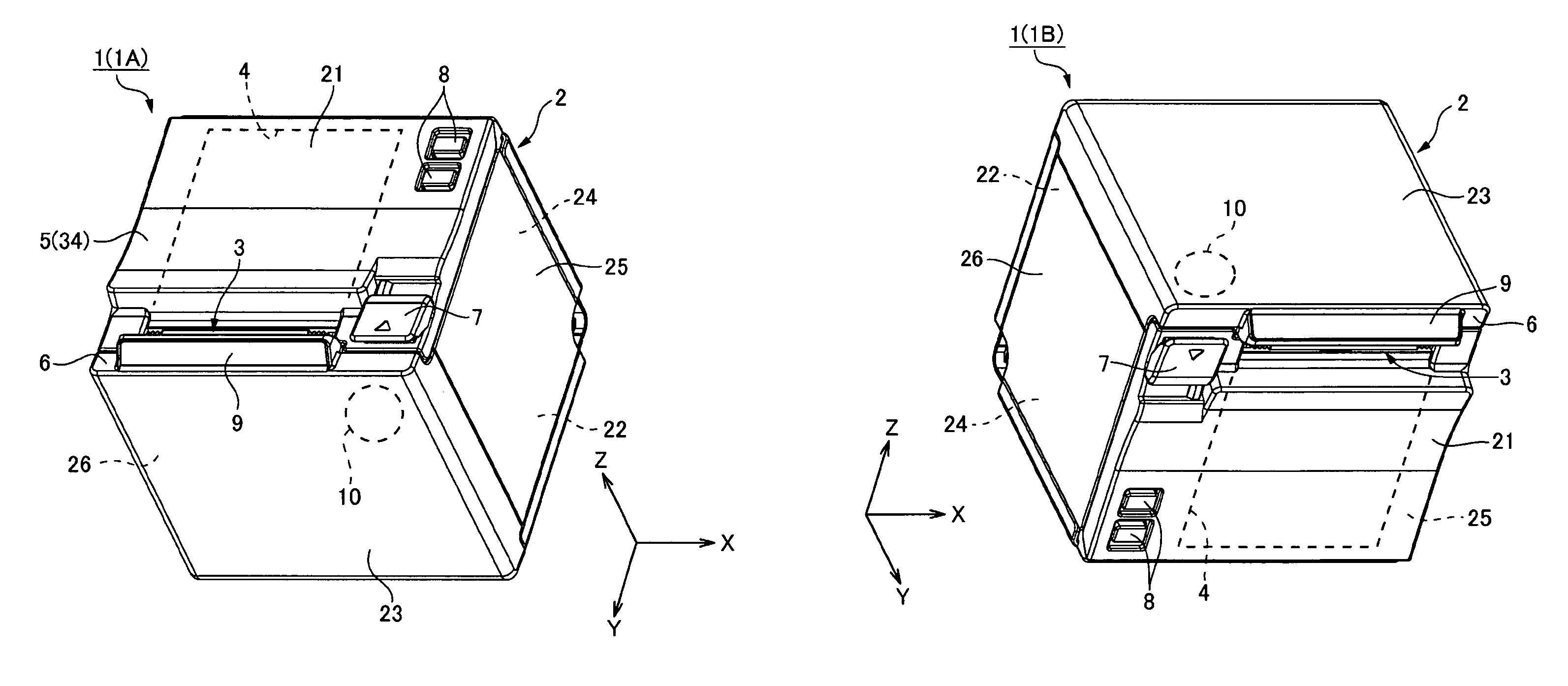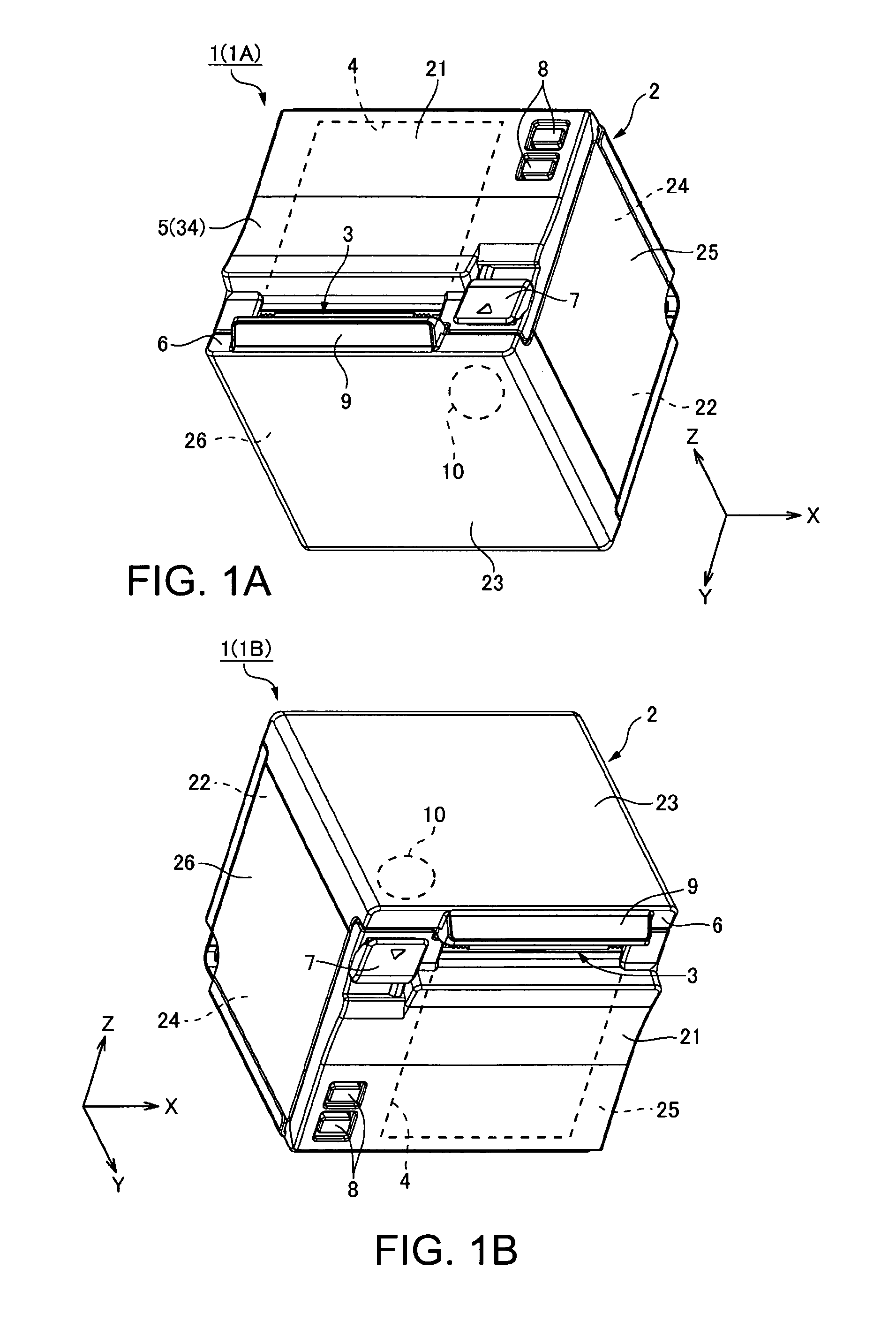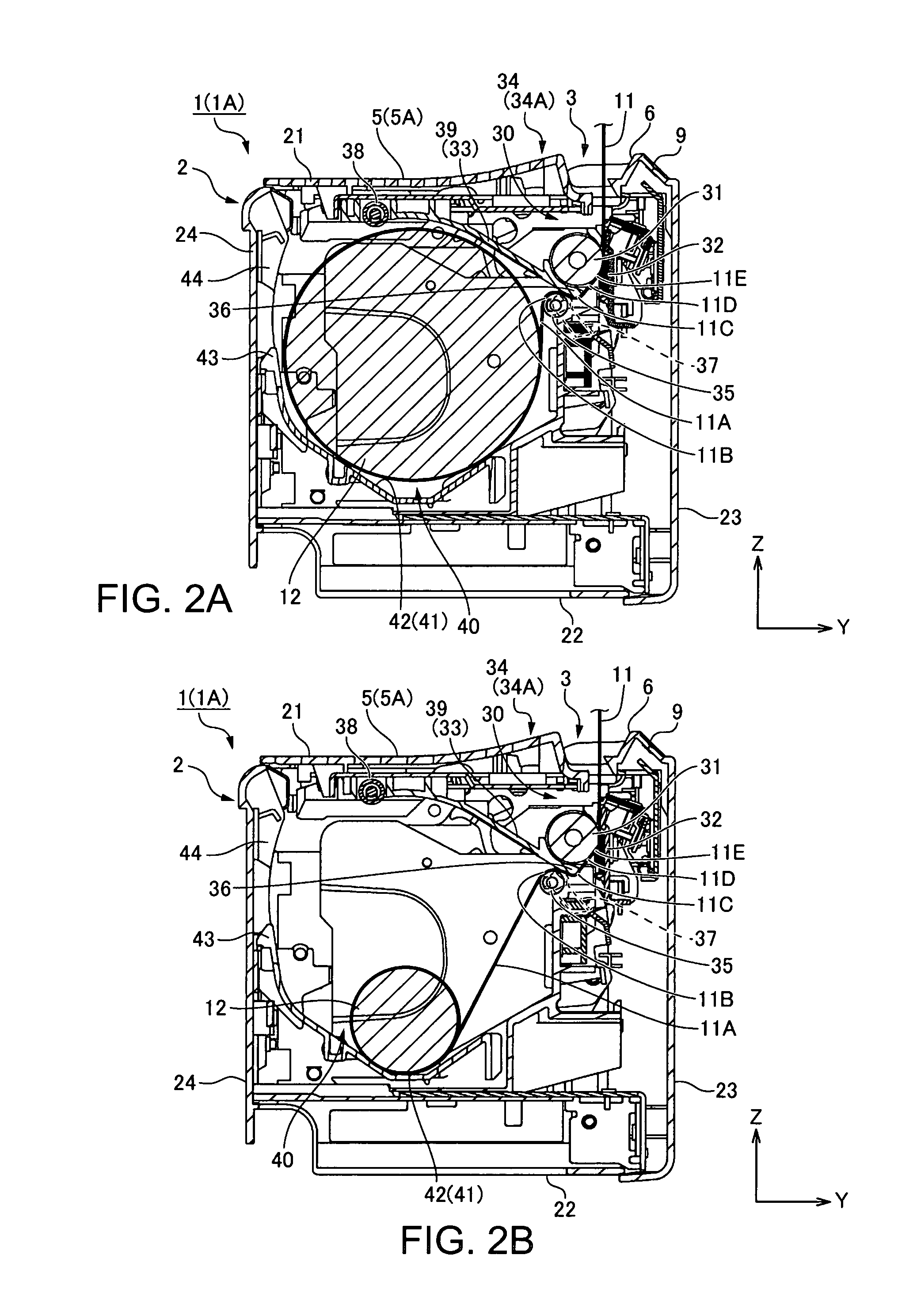Printing device
a printing device and printing plate technology, applied in printing, other printing apparatus, etc., can solve the problems of recording paper, recording paper, and the angle at which the recording paper contacts the platen roller to change, so as to suppress the variation in the conveyance force to due to the change in the contact angle, convey stably, and the recording paper cannot go slack or deform.
- Summary
- Abstract
- Description
- Claims
- Application Information
AI Technical Summary
Benefits of technology
Problems solved by technology
Method used
Image
Examples
Embodiment Construction
[0021]Exemplary embodiments of the present disclosure are described below with reference to the accompanying drawings.
General Configuration
[0022]FIGS. 1A and 1B are external oblique views of a roll paper printer according to this embodiment of the disclosure. This embodiment of the disclosure is described with reference to three mutually perpendicular axes, the transverse axis X, longitudinal axis Y, and vertical axis Z. In the three directions XYZ shown in FIGS. 1A and 1B, the direction of the arrow denotes the positive (+, forward) direction, and the direction opposite the arrow is the negative (−, reverse) direction.
[0023]The roll paper printer 1 (printing device) is placed on its XY surface, which is a flat surface, for use. The roll paper printer 1 stores a paper roll 12 (see FIGS. 2A, 2B, 3A and 3B) of continuous recording paper 11 wound into a roll, and prints on the recording paper 11 delivered from the paper roll 12.
[0024]The roll paper printer 1 has a basically rectangular...
PUM
 Login to view more
Login to view more Abstract
Description
Claims
Application Information
 Login to view more
Login to view more - R&D Engineer
- R&D Manager
- IP Professional
- Industry Leading Data Capabilities
- Powerful AI technology
- Patent DNA Extraction
Browse by: Latest US Patents, China's latest patents, Technical Efficacy Thesaurus, Application Domain, Technology Topic.
© 2024 PatSnap. All rights reserved.Legal|Privacy policy|Modern Slavery Act Transparency Statement|Sitemap



